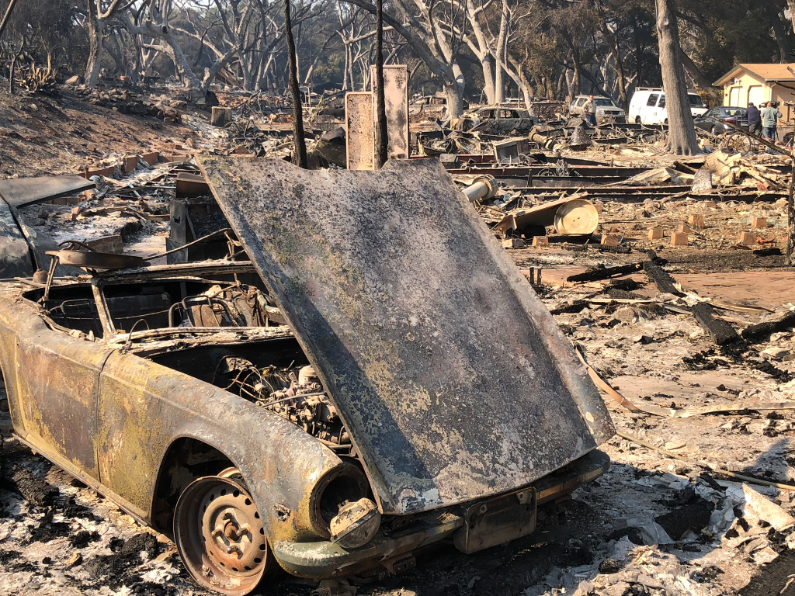Study examines future of California wildfires

In a state with a storied history of wildfires throughout its coasts and forests, researchers within the UCLA Department of Geography published research Feb. 17 about the future of California wildfire seasons and conditions. Composed of new information on the changing climate in both the northern and southern parts of the state, the research looks to serve as an advocate for bolder and more innovative actions to combat climate change in the USC community and beyond.
Analyzing data dating back to 1975, the team found a wide disparity between the amount of area burned in Northern and Southern California. In the northern coastal regions and Sierra Nevada area, there has been a significant increase in acres burned over the last two fire seasons; meanwhile, the south region showed no trend of annual acre increases.
Glen MacDonald, UCLA Department of Geography professor and co-author of the study, said the inspiration for the research stemmed from the team’s practice in studying climate change differences between Northern and Southern California, particularly through contrasts in vegetation and wildfire risk conditions.
“Here, in Southern California, we’re mainly dealing with shrubland and grassland, coastal sage scrub and chaparral, but you can’t treat that the same way you would forested fuels like you would get up in Northern California, or in the Sierra Nevada where you have forested ecosystems,” MacDonald said. “How you manage those fuels is very different between Northern and Southern California.”
The two regions also contain differences when it comes to fire ignition sources, MacDonald said. In more forested areas in the north, fires generally occur less often, but the region’s greater frequency of lightning strikes could start a fire. In the south, fires occur more frequently on account of the environment’s flammable brushland and a higher likelihood that a human source will start the wildfire because of the high population.
“The distinct fire frequency changes in the same state have implications in understanding the role of climate and fuels as drivers of wildfire risk in California,” the study read. Such findings have had policy and environmental experts looking to the past for answers.
Rebecca Miller, an expert on wildfire policy and postdoctoral scholar with the the West On Fire project at the Huntington USC-Institute on California and the West, said that about 95% of wildfires are caused by humans, especially as more people move to and build in wildlands. Additionally, fire suppression efforts in the state have changed the frequency of natural wildfires — there is an increased amount of time between fires that can be up to three times as long as it should be.
The history of fire suppression efforts by the United States Forest Service throughout the 20th century is a key factor when considering these altered fire intervals, Miller said.
“The goal was to keep fires as small as possible under the incorrect belief that fires were bad for ecosystems,” Miller said. “Fire has many benefits to our ecosystems, whether it’s soil rejuvenation or the spreading and germination of plants.”
Fire suppression efforts have also contributed to an overgrowth of flammable vegetation that typically clears out within regular fire events.
The ongoing climate change crisis adds additional layers to efficiently managing wildfires in future seasons. Calculations of global warming scenarios predict the average temperature in Southern California to increase by approximately nine degrees by the year 2100 — a significant increase in temperature that may translate to wildfire risk seasons doubling in the amount of days, beginning earlier and ending later each year, according to study projections.
“There’s two big messages: one, if we start decreasing the amount of greenhouse gasses we put out — and that’s going to really require global effort — we will curtail the risk of wildfire here in Southern California. If we start now, we can do that,” MacDonald said. “But the second thing is that wildfires are just a natural part of the ecosystem and the climate system here in Southern California, and it’s going to get worse.”
MacDonald said that these climate predictions should help Californians and others better understand the future of climate conditions and preventive actions to avoid catastrophic damages to the environment.
“I’m hoping that our study will not scare people and be ‘doom and gloom’ but will say this is a really serious problem,” MacDonald said. “It’s getting worse, and it’ll spur people to think about innovative ways to decrease our vulnerability and innovative ways to decrease our greenhouse gas emissions.”

